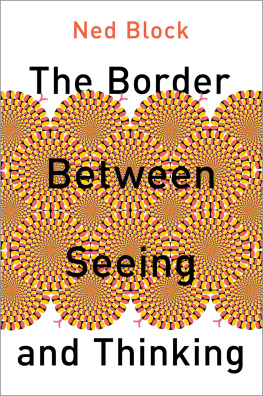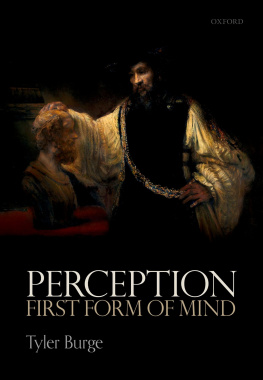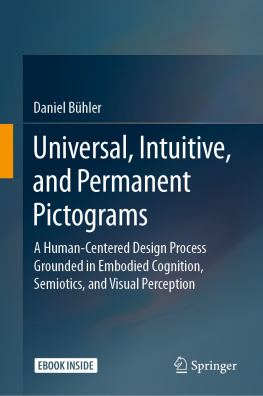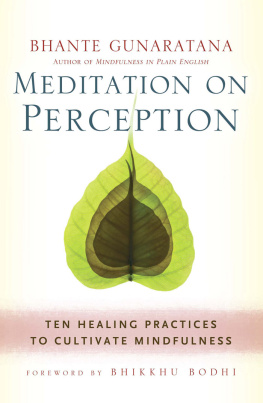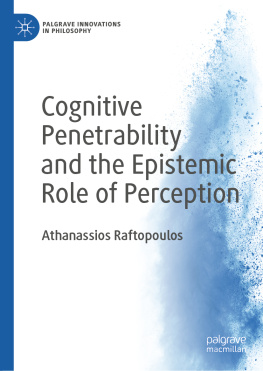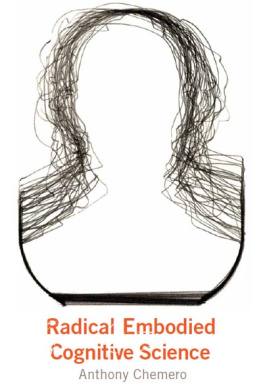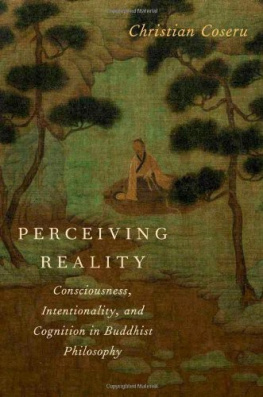The Border Between Seeing and Thinking
PHILOSOPHY OF MIND SERIES
SERIES EDITOR: David J. Chalmers, New York University
The Conscious Brain
Jesse Prinz
Simulating Minds
The Philosophy, Psychology, and Neuroscience of Mindreading
Alvin I. Goldman
Supersizing The Mind
Embodiment, Action, and Cognitive Extension
Andy Clark
Perception, Hallucination, and Illusion
William Fish
Phenomenal Concepts and Phenomenal Knowledge
New Essays on Consciousness and Physicalism
Torin Alter and Sven Walter
The Character of Consciousness
David J. Chalmers
The Senses
Classic and Contemporary Philosophical Perspectives
Fiona Macpherson
Attention Is Cognitive Unison
An Essay in Philosophical Psychology
Christopher Mole
The Contents of Visual Experience
Susanna Siegel
Consciousness and the Prospects of Physicalism
Derk Pereboom
Consciousness and Fundamental Reality
Philip Goff
The Phenomenal Basis of Intentionality
Angela Mendelovici
Seeing and Saying
The Language of Perception and the Representational View of Experience
Berit Brogaard
Perceptual Learning
The Flexibility of the Senses
Kevin Connolly
Combining Minds
How to Think about Composite Subjectivity
Luke Roelofs
The Epistemic Role of Consciousness
Declan Smithies
The Epistemology of Non-Visual Perception
Berit Brogaard and Dimitria Electra Gatzia
What Are Mental Representations?
Edited by Joulia Smortchkova, Krzysztof Doga, and Tobias Schlicht
Phenomenal Intentionality
George Graham, John Tienson, and Terry Horgan Feminist Philosophy of Mind, Keya Maitra and Jennifer McWeeny
The Border Between Seeing and Thinking
Ned Block

Oxford University Press is a department of the University of Oxford. It furthers the Universitys objective of excellence in research, scholarship, and education by publishing worldwide. Oxford is a registered trade mark of Oxford University Press in the UK and certain other countries.
Published in the United States of America by Oxford University Press
198 Madison Avenue, New York, NY 10016, United States of America.
Oxford University Press 2023
All rights reserved. No part of this publication may be reproduced, stored in a retrieval system, or transmitted, in any form or by any means, without the prior permission in writing of Oxford University Press, or as expressly permitted by law, by license, or under terms agreed with the appropriate reproduction rights organization. Inquiries concerning reproduction outside the scope of the above should be sent to the Rights Department, Oxford University Press, at the address above.

This is an open access publication, available online and distributed under the terms of a Creative Commons Attribution Non Commercial No Derivatives 4.0 International licence (CC BY-NC-ND 4.0), a copy of which is available at http://creativecommons.org/licenses/by-nc-nd/4.0/.
You must not circulate this work in any other form and you must impose this same condition on any acquirer.
CIP data is on file at the Library of Congress
Names: Block, Ned, 1942- author.
Title: The border between seeing and thinking / Ned Block.
Description: New York, NY : Oxford University Press, [2022] | Series:
Philosophy of mind series | Includes bibliographical references and index.
Identifiers: LCCN 2022006336 (print) | LCCN 2022006337 (ebook) |
ISBN 9780197622223 (hardback) | ISBN 9780197622247 (epub)
Subjects: LCSH: Cognition. | Perception. | Thought and thinking. | Senses
and sensation.
Classification: LCC BF311 .B554 2022 (print) | LCC BF311 (ebook) |
DDC 153dc23/eng/20220504
LC record available at https://lccn.loc.gov/2022006336
LC ebook record available at https://lccn.loc.gov/2022006337
ISBN 9780197622223
DOI: 10.1093/oso/9780197622223.001.0001
The publisher gratefully acknowledges support from New York University for providing funding for this Open Access publication.
For my grandchildren, Ada, Mae, and Felix.
Contents
This book is about the border between perception and cognitionwhat it is and why it is important. I was drawn to this subject because of the realization that the difference between what I called access consciousness (cognitive access to phenomenally conscious states) and what I called phenomenal consciousness (what it is like to experience) was rooted in a difference between perceptionwhether conscious or unconsciousand cognitive access to perception.
A bit of the material in this book appeared in one of my four Jean Nicod Lectures in Paris in 2014 (though those lectures were on consciousness rather than the perception/cognition border). I am very grateful to Pierre Jacob and Frdrique de Vignemont for their warm hospitality and wonderful intellectual stimulation.
I am grateful to Jake Beck, Philip John Bold, Tyler Burge, Susan Carey, David Chalmers, Rachel Denison, Santiago Echeverri, Chaz Firestone, E. J. Green, Steven Gross, Chris Hill, Zoe Jenkin, Leonard Katz, Geoff Lee, Bria Long, Eric Mandelbaum, Jessie Munton, Albert Newen, Adam Pautz, Mary Peterson, Ian Phillips, Chris Peacocke, Jake Quilty-Dunn, Susanna Siegel, Barry Smith, and anonymous reviewers for comments on an earlier draft. I am also indebted to discussion groups at Berkeley and NYU that discussed an earlier draft. I am grateful to Templeton World Charities for their support and to Rebecca Keller for preparing both indexes.
My indebtedness to my wife, Susan Carey, and to her book, The Origin of Concepts, is visible at many points in the book. The issue I have struggled with most is how to fit core cognition into my picture of the joint in nature between cognition and perception.
Ned Block
Cambridge, MA, November 2021
What is the difference between seeing and thinking? Is the border between seeing and thinking a joint in nature in the sense of a fundamental explanatory difference? Is it a difference of degree? Does thinking affect seeing, or, rather, is seeing cognitively penetrable? Are we aware of faces, causation, numerosity, and other high-level properties or only of the colors, shapes, and textures thataccording to the advocate of high-level perceptionare the low-level basis on which we see them? How can we distinguish between low-level and high-level perception, and how can we distinguish between high-level perception and perceptual judgment? Is there evaluative perception or is evaluation a matter of emotion and perceptual judgment? Is perception conceptual and propositional? Is perception iconic or more akin to language in being discursive? Is seeing singular? Which is more fundamental, visual attribution or visual discrimination? Is all seeing seeing-as? What is the difference between the format and content of perception, and do perception and cognition have different formats? Is perception probabilistic and, if so, why are we not normally aware of this probabilistic nature of perception? Does perception require perceptual constancies? Are the basic features of mind known as core cognition a third category in between perception and cognition? Are there perceptual categories that are not concepts? Where does consciousness fit in with regard to the difference between seeing and thinking? What is the best theory of consciousness and does the perception/cognition border have any relevance to which theories of consciousness are best? These are the questions I will be exploring in this book. I will be exploring them not mainly by appeals to intuitions, as is common in philosophy of perception, but by appeal to empirical evidence, including experiments in neuroscience and psychology.

